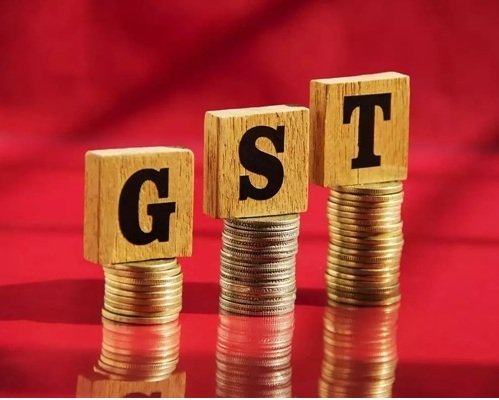Last Updated on July 16, 2025 10:29 am by BIZNAMA NEWS
R. Suryamurthy
As India inches closer to overhauling its multi-rate Goods and Services Tax (GST) structure, a new working paper from the National Institute of Public Finance and Policy (NIPFP) has issued a pointed warning: the proposed simplification may deepen fiscal instability for states and widen regional inequities unless accompanied by robust compensatory mechanisms and better data transparency.
Authored by Professor Sacchidananda Mukherjee, the report systematically dismantles the optimism surrounding rate rationalisation—an idea repeatedly floated by the GST Council. While streamlining the tax structure from its current seven-rate regime to a more compact two- or three-rate system is often pitched as an administrative win, Mukherjee argues that the reform narrative glosses over a fundamental truth: India lacks the institutional readiness to implement it without endangering state finances.
“In the absence of granular, rate-wise tax collection data and with wide inter-state variation in consumption patterns, any attempt to restructure GST rates is bound to be fiscally blind,” Mukherjee asserts in the paper.
A System Built for Complexity, Not Uniformity
India’s GST framework—riddled with rates ranging from nil to 28% and further complicated by special and composition levies—was originally designed as a politically brokered compromise, not a model of tax simplicity. Mukherjee reminds readers that this structure was born out of a desire to preserve revenue neutrality for states after the Centre subsumed multiple indirect taxes under GST in 2017.
Ironically, the very rate diversity once deemed necessary to win consensus has now become the focal point of reform discussions. But critics like Mukherjee argue that simplification risks sacrificing federal fiscal balance for the optics of ease-of-doing-business. Without clarity on how rate changes affect revenue—especially in a system where input tax credit (ITC) flows and inter-state IGST adjustments are not disclosed by rate slab—states are being asked to accept reform on faith.
The Ministry of Finance itself, in a 2024 parliamentary response, admitted that it is currently not possible to calculate GST collections by tax rate, due to limitations in return filings like GSTR-1, GSTR-2B, and GSTR-3B.
Reform Without Revenue Protection: A Recipe for Resistance
The political resistance to rate rationalisation is not just ideological; it is material. Post-2022, when the constitutional guarantee for GST compensation to states expired, no safety net remains in place to cushion states against revenue shocks. With GST accounting for a major share of state tax revenue, particularly in poorer states, any adverse fiscal impact from rate adjustments could have direct consequences on development spending and public services.
Mukherjee’s comparative analysis using the 2022–23 Household Consumption Expenditure Survey highlights the asymmetry: in states like Chhattisgarh, a disproportionate share of consumption falls within low-tax or exempt categories, while relatively affluent states like Goa show a higher share of consumption in mid- and high-rate brackets. Flattening the rate structure would, therefore, redistribute tax burdens in a way that systematically disadvantages poorer, less urbanised states.
“The push for simplification may unwittingly accelerate fiscal inequality among states,” the report cautions.
Flawed Data, Flawed Policy
At the heart of the critique lies a deeper institutional failure: India’s GST data architecture is fundamentally ill-equipped to support nuanced policymaking. The current return filing system provides only a partial view of tax flows, omitting critical details like tax rate-wise ITC claims or IGST settlements. This opacity makes it virtually impossible for either the Union or states to model the real impact of proposed rate changes.
Even when estimates exist—as in the Finance Ministry’s ballpark figures suggesting that the 18% slab accounts for 70–75% of total GST revenue—the absence of corroborating public data raises questions about transparency and accountability.
In essence, policymakers are flying blind into a tax restructuring exercise that could alter the fiscal foundations of Indian federalism.
A Stopgap Solution or Political Band-Aid?
As a way forward, Mukherjee proposes replacing the expiring GST compensation cess with a new “additional GST” post-March 2026—ideally structured as a concurrent tax so that states can claim a higher share of the proceeds. He even recommends expanding its scope beyond sin goods to include commodities with environmental or health externalities.
But this proposal, while pragmatic, may be too little, too late. It remains unclear whether states would accept a new cess-like levy in the absence of a formal constitutional backing or whether the Centre has the political capital to push it through.
Moreover, the introduction of yet another GST layer seems to run counter to the very logic of simplification that rate rationalisation is meant to serve. In trying to fix one distortion, the system risks creating another.
Conclusion: A Reform Imperative Built on Unstable Ground
The NIPFP paper lays bare a sobering reality: India’s GST system is still in its evolutionary phase, and any major structural change—particularly to its rate framework—requires far greater data clarity, political trust, and fiscal guarantees than currently exist.
By framing the debate as a trade-off between simplification and stability, Mukherjee injects much-needed rigour into a policy conversation too often shaped by bureaucratic convenience or business lobbying.
In its current form, GST rate rationalisation is less a reform imperative and more a fiscal gamble—one that could erode not just state revenues, but the very consensus that keeps Indian fiscal federalism afloat.
(R. Suryamurthy is a senior economic journalist based in Delhi.)


